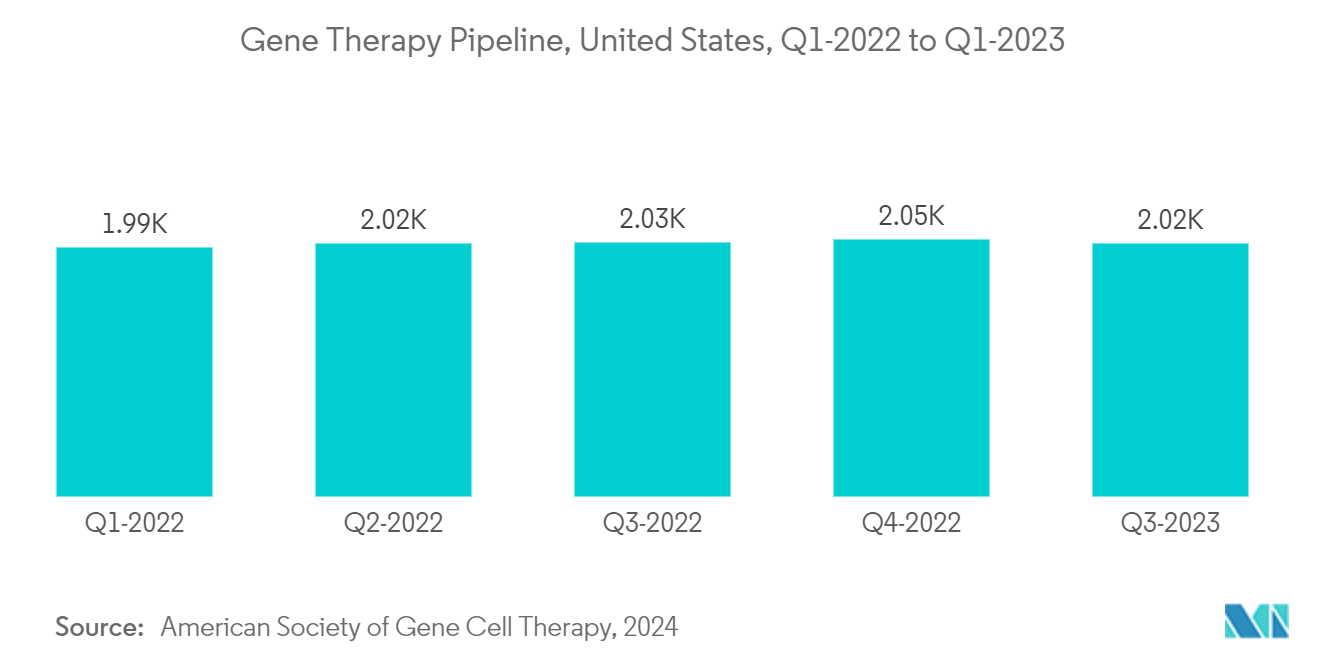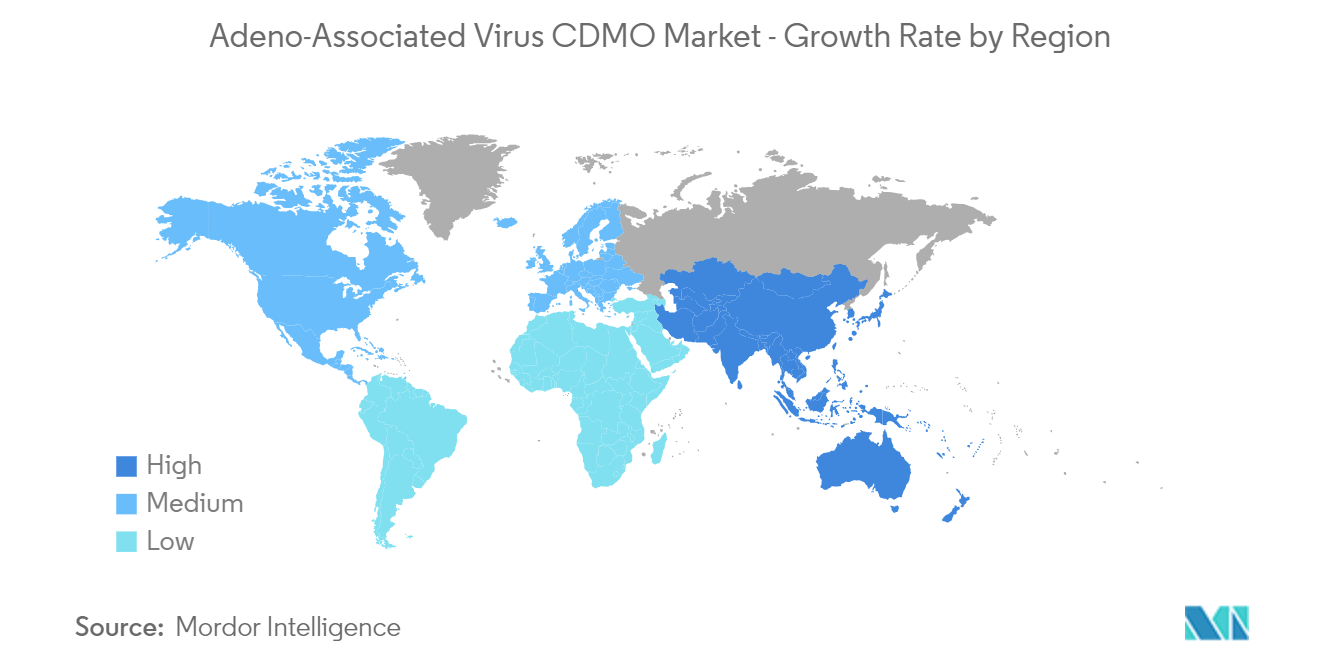Market Trends of Adeno-Associated Virus (AAV) CDMO Industry
Cell and Gene Therapy Development is Expected to Witness Rapid Growth Over the Forecast Period
Cell and gene therapy development is one of the most rapidly evolving segments. Several developments are occurring in the cell and gene therapy space that are driving segmental growth. For instance, in June 2023, Laurus Labs Ltd, one of the pharma companies in India, inked a memorandum of agreement (MoA) with IIT Kanpur (IITK) for in-licensing novel gene therapy assets using AAV vectors and bringing them to market.
Similarly, in December 2022, Merck partnered with Synplogen, a Kobe University spin-off, to enhance gene therapy development in Japan. This collaboration combined Merck's CTDMO expertise with Synplogen's capabilities, facilitating streamlined processes for gene therapy development, manufacturing, and testing.
In August 2022, Polyplus unveiled its groundbreaking Transgene Plasmid Engineering Services tailored specifically for viral vector production. The expansion of Polyplus' plasmid services provided a comprehensive range of options for next-generation viral vector and gene therapy manufacturing. These services can be utilized independently or in conjunction with the industry-standard PEIpro and FectoVIR-AAV reagents and kits. In May 2022, AGC Biologics expanded its Longmont, Colorado facility, adding viral vector suspension technology and capacity to support the development and manufacturing of gene therapies. These new capabilities, which were launched online in the third quarter of 2022, enhanced the site's existing viral vector and cell therapy services.
Consequently, due to factors such as the burgeoning involvement of companies in cell and gene therapy and robust collaborations among them, the cell and gene therapy segment is poised for significant growth in the future.

North America is Expected to Dominate the Market During the Forecast Period
North America is expected to dominate the market due to factors such as the well-established pharmaceutical and biotechnology industry and the rising focus on contract manufacturing across the region.
The companies are investing in research and development of gene therapy. For instance, in October 2022, Astellas invested USD 50 million in Taysha Gene Therapies Inc. in order to gain access to two of its AAV gene therapy initiatives for Rett syndrome and giant axonal neuropathy (GAN). Similarly, the National Cancer Institute (NIC), based on data updated in March 2022, was given USD 6.9 billion by the Consolidated Appropriations Act 2022. This was a net increase of USD 353 million over FY 2021. The FY 2022 allocation included USD 194 million in funding for the Cancer Moonshot and USD 50 million for the Childhood Cancer Data Initiative. Thus, increasing investments in enabling a precision medicine approach across the country are expected to drive the market during the forecast period.
Companies operating in the area are investing heavily in the research and development of advanced and effective therapeutics for cancer treatment and launching new products, which is expected to further boost the growth of the cancer segment in the market studied.
In November 2022, the US Food and Drug Administration approved Hemgenix, an adeno-associated virus vector-based gene therapy for treating adults with Hemophilia B or life-threatening historical hemorrhage or who have repeated, serious, severe spontaneous bleeding episodes.
The North American market is experiencing growth as a result of increasing investments by companies and the presence of a well-established pharmaceutical industry in the region.


